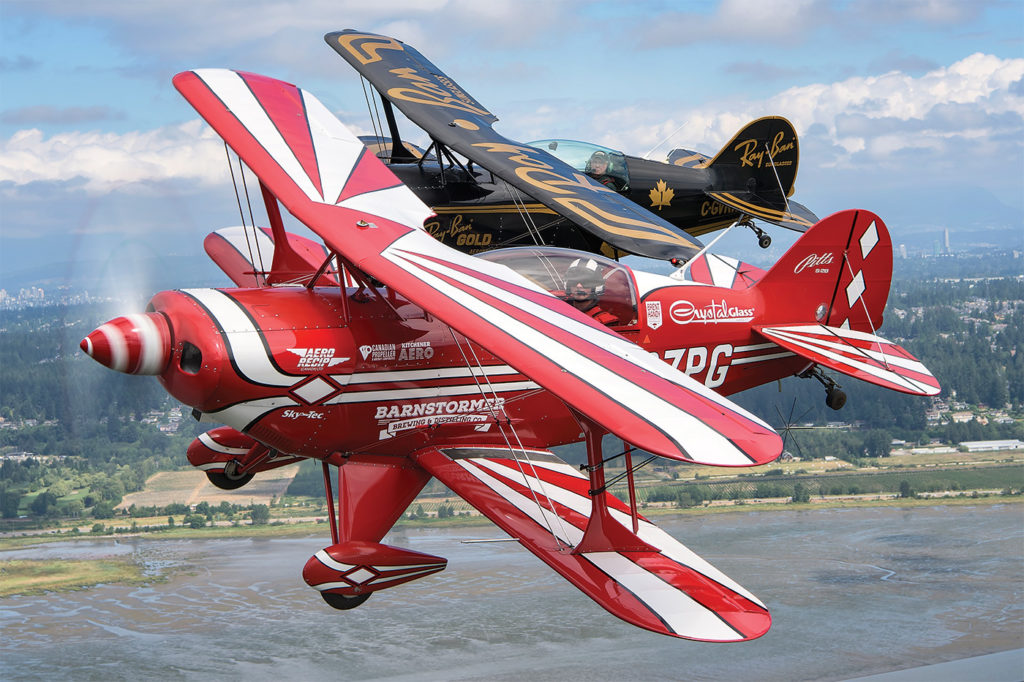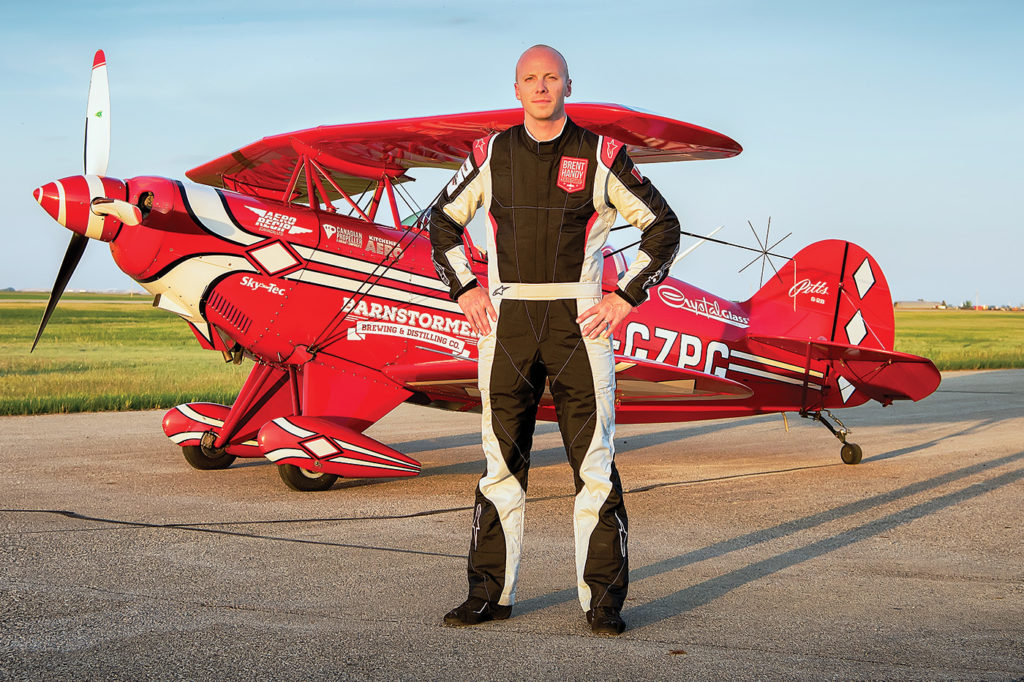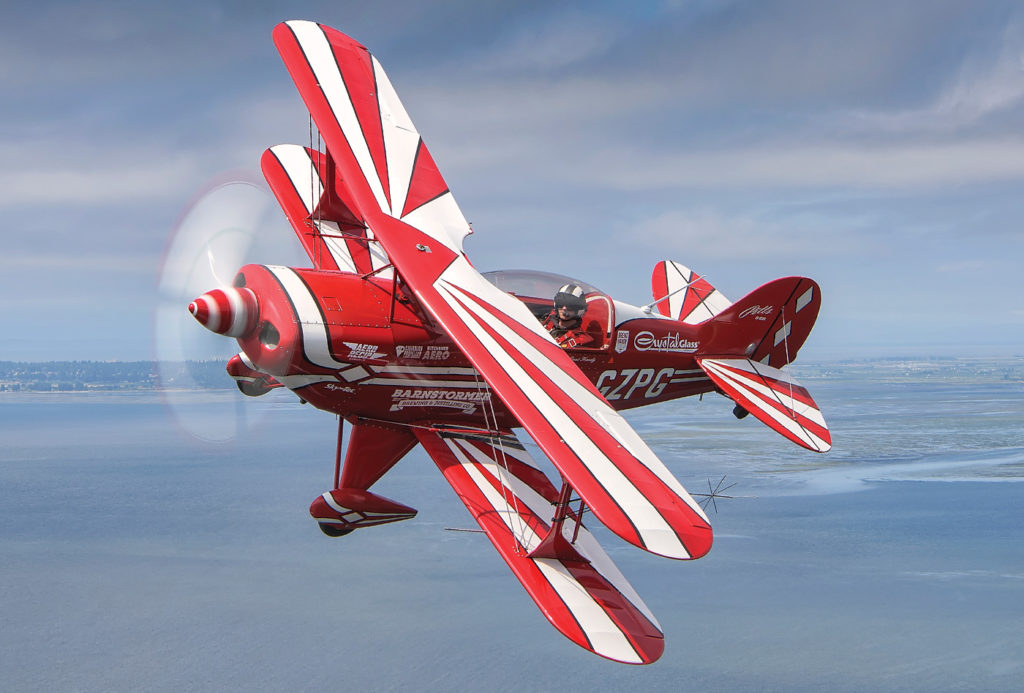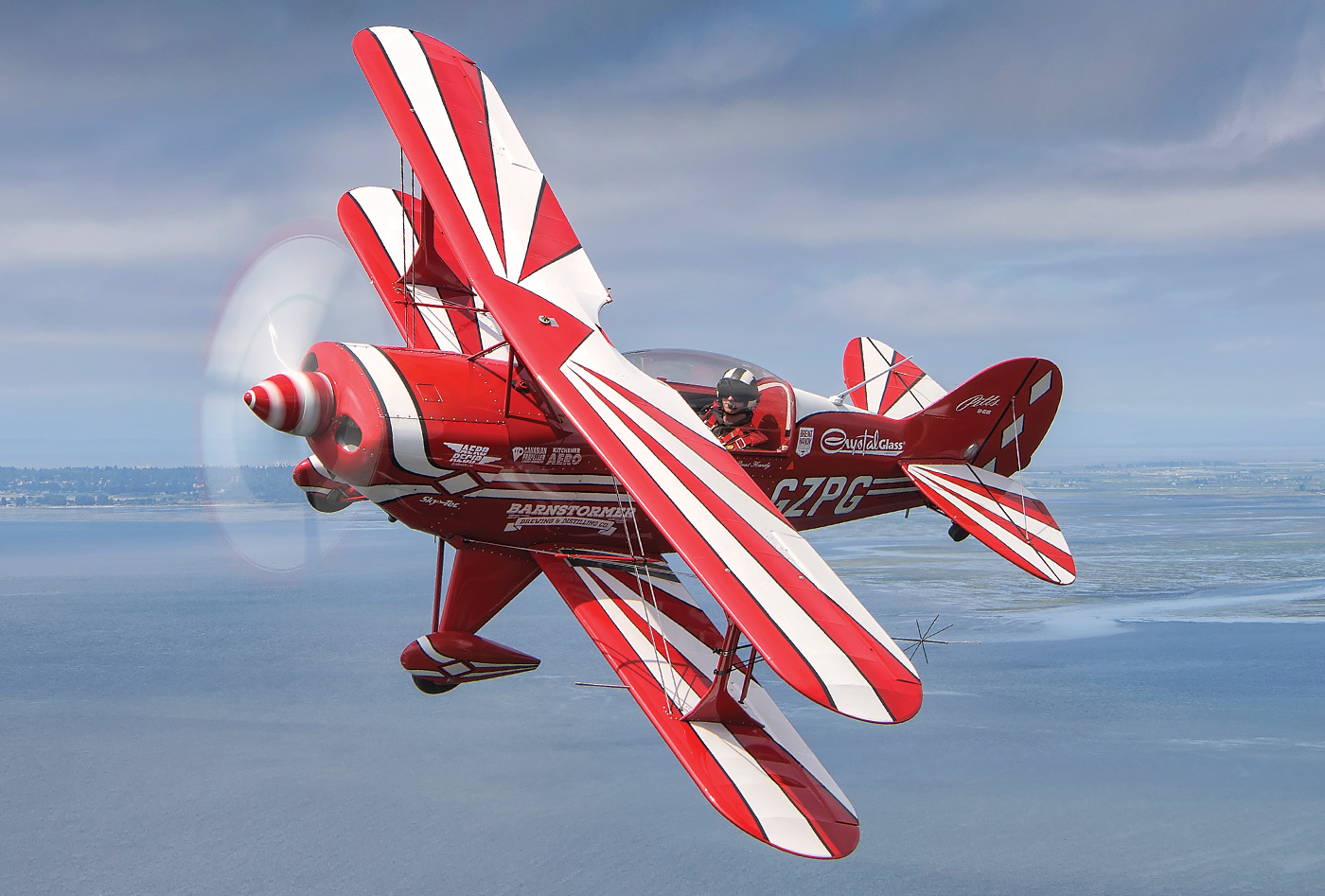Estimated reading time 10 minutes, seconds.
When Brent Handy was 11 years old, he saw a Royal Canadian Air Cadet glider in a mall near his hometown of Wyevale, Ont., about 40 minutes northwest of Barrie.

A shy kid who had yet to find his passion in life, Handy was astounded to learn that it was possible for him to earn his glider pilot licence through the Air Cadets, an organization he’d never heard about.
“I thought being a pilot was the ultimate when I was a kid,” he said. “I didn’t know any pilots; nobody in our family was a pilot. I don’t think I believed I’d be able to do it.”
For Handy, the Air Cadets opened up a whole new world.
“It was tough for me. I was a very, very shy kid,” he admitted. “I didn’t know a single person there. I was so shy and it was such a foreign environment; kids in uniform, marching around, yelling.”
Handy credits his parents for their patience and encouragement; he said they’d drop him off at meetings in nearby Midland, Ont., and wait for him in the parking lot. Sometimes, Handy would come out and sit in the car for a break.
Eventually, it got better. Then, the summer after his first year in cadets, Handy was named top junior cadet.
“That was the first time I felt like I had achieved something,” he said. “That was a pivotal moment in my life. From there, I really started to believe in myself. I loved flying so much that studying 24/7 was no problem for me. It was like a fire that ignited and took over my life.”
BALANCING ACT
Fast forward to the fall of 2017, and that shy kid is nowhere to be found in the present-day Brent Handy, who has racked up more than 4,700 hours in the air–4,000 of them in jets or aerobatic aircraft.
At age 40, he is just coming off his fourth season on the airshow circuit, wowing thousands of fans under his own banner, Brent Handy Aerobatics. His eye-catching red and white Pitts Special S-2B carves up the sky at nine to 12 airshows a year, most of them in Western Canada and the Northwestern U.S.

What is so remarkable about Handy’s dedication to his airshow business is that he balances it with a full-time military career and a young family.
Since joining the Royal Canadian Air Force (RCAF) in 1999, Handy has progressed steadily through the ranks, qualifying on the CF-188 Hornet fighter at age 30 and later performing as a member of the Canadian Forces Snowbirds aerobatic team for the 2012 and 2013 seasons.
Today, Handy is based in Moose Jaw, Sask., working as a standards and evaluation pilot for Winnipeg-based
2 Canadian Air Division. His job is to function as an independent observer of 15 Wing Moose Jaw’s Snowbirds 431 Air Demonstration Squadron. He helps implement any regulatory changes, technical orders and pilot procedures, and performs team and pilot evaluations.
“In reality, when it comes to this time of year and the new pilots are around the squadron, I’m pretty intimately involved in getting them trained up,” said Handy, who flies about 150 hours per year in the team’s CT-114 Tutor aircraft.
So how does he balance his full-time job, his family life–with wife Rebecca and kids Evan, 9, and Grace, 6–and his passion for aerobatic flying? There’s no doubt the man is busy.
“I’m up at the crack of dawn to get in a practice flight at the municipal airport [where he keeps the Pitts], then I race to the base for a training flight with the Snowbirds, followed by another aerobatics practice flight. Then I’ll watch the flight video in the evening.”
Although the municipal airport is just 10 kilometres northeast of Moose Jaw, the military base is on the opposite side of the city. Luckily, Moose Jaw isn’t known for its traffic jams.
“I’m out there three to five times a week to do practice flights. It takes a lot of hours to prepare for an airshow. The first year I got into flying aerobatics, I flew 100 hours on the Pitts each summer. Put into context, each flight is 12 minutes. That’s a lot of flights.”
As his show routine has crystallized, Handy’s schedule is not quite as hectic.
Yet every 12-minute flight is physically taxing for the unrestricted surface-rated aerobatic performer, despite the fact that his body has been conditioned by almost 20 years of military flying.
Flying in the Pitts is nothing like flying in the Tutor, however, and Handy said there’s no danger of confusing one with the other.
“The planes are so different that the mental shift from one to the other isn’t a factor. Every airplane has its pros and cons. You can’t beat the Tutor for formation aerobatic flying, but if you really want to dig into aerobatic flying, well, flying the Pitts made me feel like I was learning how to fly all over again. The controls are more sensitive and very powerful.”
But as anyone who has flown it knows, the Pitts is anything but a cross-country airplane. The most challenging aspect, said Handy, is simply transiting to and from airshows.
“For the last 20 years, I’ve flown a well-equipped, high-performance airplane that can get up above the weather. For me to shift into the Pitts, which is a VFR airplane, bumping around under the weather all the time–that was very challenging.
“The Pitts is built for 10 minutes at a time,” he noted. His has a ferry tank that extends its range to 400 nautical miles.
Still, “It’s hard enough to put on the ground on the best of days, let alone after you’ve been flying it for hours,” Handy said, when describing the seemingly simple task of landing the airplane after a numbing three-hour transit.
A DREAM WITHIN REACH
Once he lands at an airshow, however, it’s like old home week. Handy–who uses his personal leave time from the Air Force to perform–said the airshow community is tight-knit.

“You get these intense friendships with people and then you don’t see them for a while, and then you get together at the next show,” he said. “It’s very akin to military friendships.
“It’s a quirky community; you have military performers at an airshow and you have civilian performers. The military performers are sharp, professional; they fit the mould. Then, when you look at the civilians, what a crazy mix of people! There’s the full spectrum of personalities and airplanes there. Everyone flies for a slightly different reason.”
For Handy, the exposure to civilian aerobatics came during an airshow in Yarmouth, N.S., when American performer Gary Ward took him for a spin in his MX-2. The memory of that flight is still crystal clear.
“The first flight blew my mind! The roll rate, the ability to tumble it, do all kinds of aerobatics I’d never even conceived of before. . . . It was like learning to fly all over again. I knew from that moment that if there was any way I could swing it, I would get into that kind of flying. Then, I realized there were people who were willing to pay for a pilot to do that kind of flying!”
And so, after his 2013 tour with the Snowbirds, Handy stepped “outside his comfort zone,” developed a business plan for Brent Handy Aerobatics, and presented it to the bank.
“Hanging around upside down just above the ground is another day at work for me, but going to the bank to get the loan was scary!”
His wife, Rebecca, knows how passionate he is about flying, but even she was surprised when Handy said he wanted to perform in airshows.
“It’s been a journey for all of us, and their support is so important,” he said. “It is tough to go away; my kids are at an age where it’s so amazing to watch their development day by day.”
But he also believes it’s important to show his children that hard work and perseverance can bring any dream within reach–and sometimes, a little sacrifice is necessary.
“It wasn’t a hard decision to get into airshow flying, because that was the only way,” he said. “I don’t come from a background with a lot of extra cash to just buy airplanes. But with a lot of work, it’s been a great way for me to pursue my passion.”
He’s also attempted to share that passion with both of his kids, taking them for flights in the Pitts.
“My daughter was the first one to fly with me. I had to find every cushion to prop her up so she could see. They’re still cautious about it. My son didn’t like the noise at first–the Pitts is a loud airplane.”
A DIFFERENT PERSPECTIVE
The 2017 airshow season was a bit of a roller coaster ride for Handy. He participated in the ill-fated Canadian Arctic Aviation Tour, which ran out of funding before it could finish, leaving performers unpaid.
“I put a lot of mileage on the airplane during that tour. You have to invest your time and money to prepare for shows; but either way, when you fly an airplane 2,000 miles round trip it’s a big expense and a lot of time on the engine.”
However, the chance to fly in the North to places he’d only visited with the RCAF was “a real eye opener as to how big the country is.
“When you’re down in the weeds at 1,000 feet in a small airplane, it’s a different perspective.”
He cherishes that outlook and has no plans to quit anytime soon.
“It’s allowing me to do what I love to do, and I use it to have fun and motivate kids and raise money for worthwhile causes. I didn’t see this coming five years ago; it’s opened up a whole world I didn’t even know about. I think it’s safe to say I’ll be doing it, if I can help it!”
Handy said the biggest rewards in his professional life have come from stepping outside his comfort zone to chase a dream–whether enrolling in Air Cadets, joining the RCAF, or approaching the bank for a loan to start his aerobatics business.
What’s next? Possibly a post-military career with a major airline–although after conquering the sky, Handy is also turning his thoughts to the water.
“I’ve been dreaming of a sailing expedition for a while now. I don’t know anyone who has done this, but I think of getting in a boat and moving it from one continent to another; that might be one of the next possibilities for me.
“There are no excuses; it’s whatever you want to do,” he concluded. “Because we live in Canada, we have so many opportunities. Whatever you want to do, you can make it happen. The only excuses are in our minds.”

